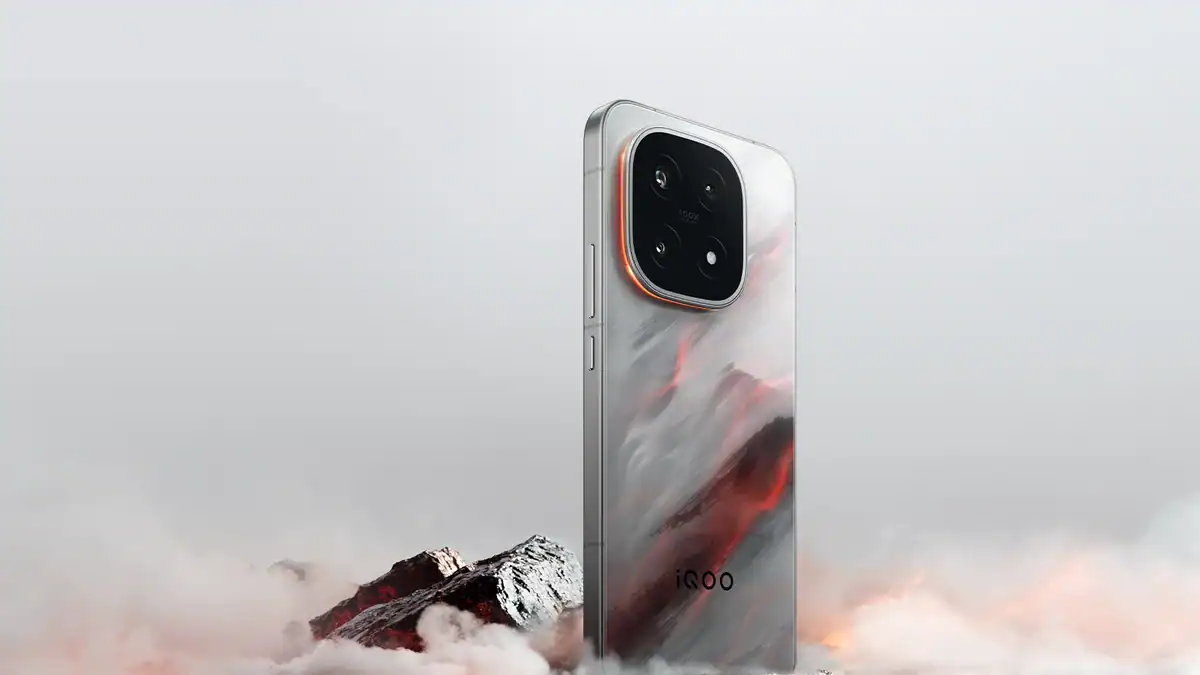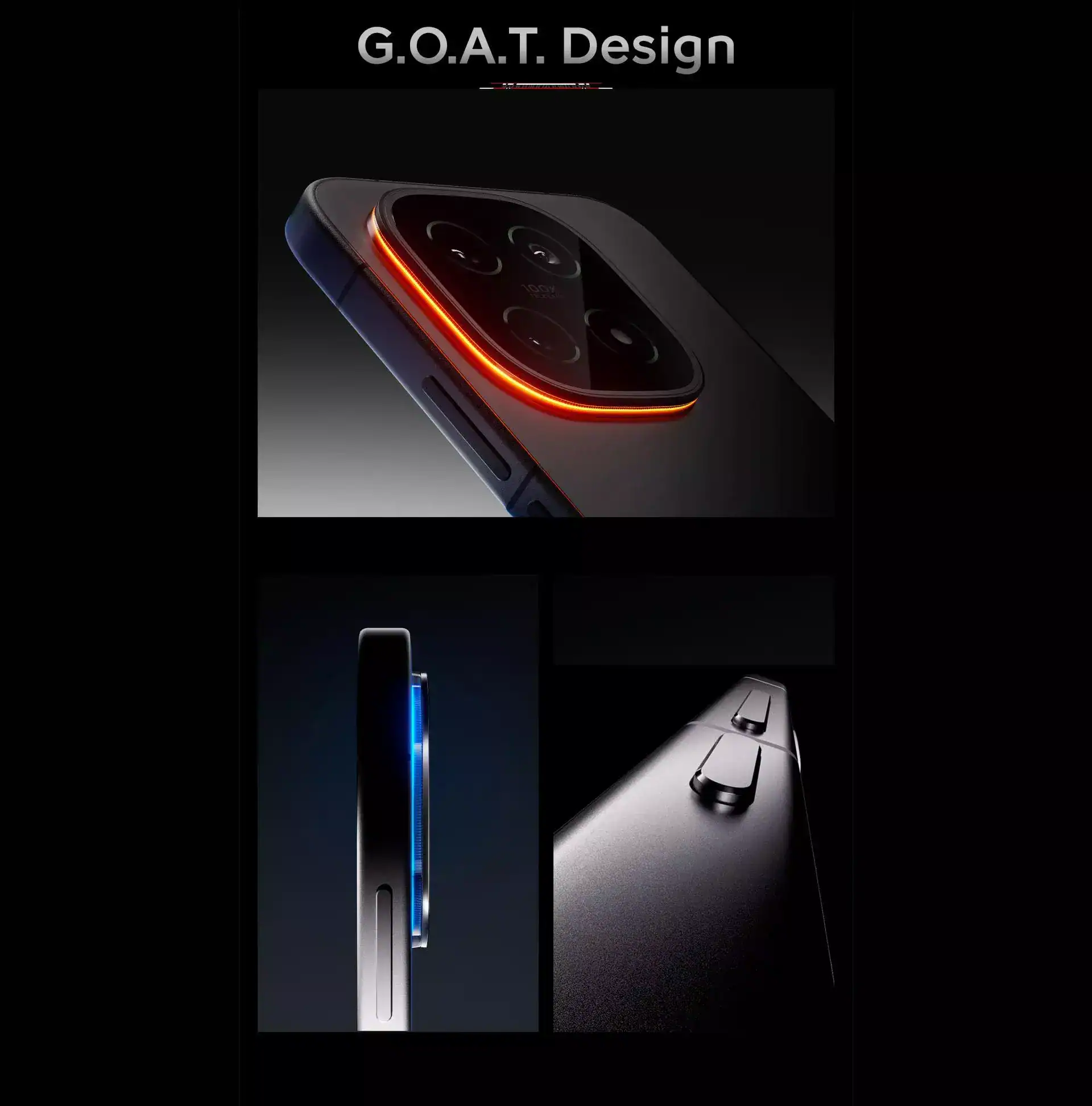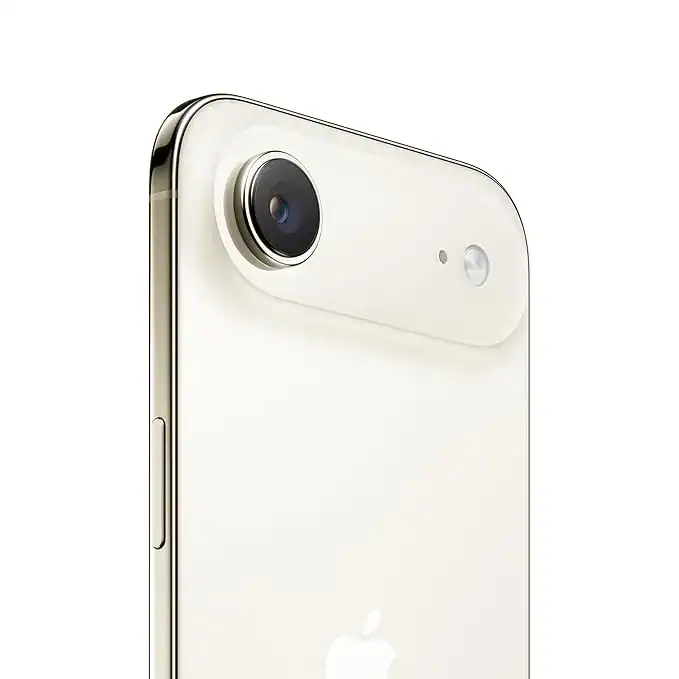
The next big flagship moment for Android enthusiasts is just around the corner, and this time all eyes are on iQOO. With the iQOO 15 launch date now officially confirmed, the hype cycle has gone into full swing — and for good reason. This phone isn’t just another yearly refresh. It is shaping up to be iQOO’s boldest flagship yet, bringing a massive jump in hardware, a big shift in software experience, and a clear message to the competition: iQOO is no longer just a “performance brand,” it’s here to dominate the premium market. The iQOO 15 launch date is November 26, and everything about this device is being positioned like a major moment for the company.
iQOO’s Biggest Flagship Push Yet
The iQOO 15’s arrival signals more than just a new model — it represents a turning point in the brand’s identity. For years, iQOO built its reputation on raw performance and gaming-first priorities. Now it wants to be perceived as a complete flagship experience, not just a speed benchmark trophy. The timing of the iQOO 15 November 26 launch is no coincidence: nearly every major OEM has already revealed their premium lineups, and iQOO clearly wants to steal the late-season spotlight before the year closes.
This time, the hardware isn’t doing the heavy lifting alone — the software finally catches up. OriginOS is making its global debut with the iQOO 15, and for many long-time fans, this might be the biggest upgrade of all.
Premium Build with a Bolder Identity
Design-wise, the iQOO 15 is going all-in on sophistication and presence. The flat-frame aesthetic returns with a more flagship-grade feel, featuring a frosted AG glass back paired with a premium metal frame. The company is leaning into stronger visual identity too — this is not a phone that hides behind subtle gradients anymore. The special editions, including a marble-finish variant and deeply customized anniversary models, suggest iQOO finally wants users to feel like they are holding a statement product, not just a fast phone.
Small touches like the Monster Halo Light around the camera ring reinforce this approach. It’s not just a design flourish — it’s a brand marker, a signature that says, “You are using an iQOO flagship.” Even the SIM ejector tool carries the BMW Motorsport emblem, reminding users of iQOO’s long-standing partnership and aggressive styling DNA.
A Display Built to Flex on the Competition
If there’s one area where iQOO is clearly taking a direct swing at big-name flagships, it’s the display. The phone is expected to sport what the brand is calling the world’s first Q10 2K AMOLED panel with a 144Hz refresh rate — a spec combination that clearly targets the needs of power users, gamers, and multimedia purists alike. This isn’t the usual incremental step up — it’s a statement upgrade.
Peak brightness levels are reportedly reaching up to 6000 nits in certain lighting conditions, which dramatically outshines most flagship displays in the industry right now. On paper, at least, this is the kind of display that doesn’t just compete — it tries to intimidate everything else around it. With LTPO technology, adaptive refresh handling, and high-frequency PWM dimming for eye comfort, the iQOO 15 is positioning itself as the kind of screen that can satisfy both gamers and daily drivers without compromise.

Performance That Puts It in a Different League
Every year, there are a handful of phones built around brute-force specification power — but the iQOO 15 is shaping up to be a different beast entirely. With the Snapdragon 8 Elite Gen 5 at its core, paired with LPDDR5X RAM and UFS 4.1 storage, this device isn’t just aiming to be “fast” — it’s positioning itself as the performance benchmark of late 2025.
Benchmarks from early units out of China already hint at blistering results crossing the 4 million mark on AnTuTu. But what makes this phone truly stand out is how iQOO wants that power to feel visible, not hidden in numbers. The brand isn’t shy about its ambitions — the iQOO 15 isn’t here to participate, it’s here to dominate.
Gaming DNA, Fully Unleashed
At its heart, iQOO still knows exactly where a huge part of its fanbase comes from — gaming. And for those users, this is a ridiculous leap forward. The in-house Q3 gaming chip is returning in its strongest form yet, enabling features like super-resolution upscaling, frame interpolation, adaptive frame stabilization, and even 144FPS gameplay in titles like BGMI.
This isn’t the kind of feature pushed just for bragging rights — it’s built to deliver the closest thing Android has to “console-grade smoothness.” The company is doubling down on immersion as well, with advanced haptics, improved vibration tuning, and game tools that let players block distractions and system-level interruptions while gaming.
The Most Aggressive Cooling System in a Smartphone
Of course, raw performance means nothing without sustained thermals — and that’s where iQOO is flexing harder than ever. The iQOO 15 comes equipped with one of the largest vapor chamber cooling systems in the industry, featuring a massive 8KV VC Ice Dome Cooling setup with a heat dissipation area of 14,000 mm².
This kind of hardware is not for casual bursts of speed — it’s engineered for long-duration, high-intensity power draw without throttling. Even during stress tests and continuous gaming demos, early testers reported surface temperatures staying impressively below 45°C. In other words: this isn’t a phone that sprints — this is a phone built for marathon performance.
A Real Camera Upgrade That Steps Beyond “Specsheet”
Perhaps one of the most surprising parts of the iQOO 15 story is that photography now feels like a first-class priority, not a checkbox. The brand is bringing a triple 50MP setup that leans heavily on Vivo’s flagship imaging pipeline — a strategic move that shifts iQOO closer to camera competition territory instead of keeping it locked in gaming prestige.
The 50MP Sony IMX921 main sensor with OIS, paired with a 50MP ultra-wide and a 50MP periscope telephoto, indicates a dramatic shift in focus. This isn’t just “big numbers.” This is optical depth, improved color science, and premium zoom range that wasn’t present in previous models. Portrait photography in particular is seeing a noticeable leap, with new focal lengths tuned specifically for DSLR-style framing.
This is the first time an iQOO flagship looks ready to go head-to-head in camera performance without any disclaimers.
Battery That Redefines Practical Flagship Use
Another headline feature — and arguably one of the biggest draws for real-world daily users — is the battery setup. The iQOO 15 is expected to pack a 7,000mAh silicon-carbon cell, one of the highest-capacity batteries ever in a mainstream flagship. And more impressively, it does this without bulking up the phone beyond usability.
Paired with 100W wired charging and 40W wireless charging, this upgrade isn’t just about endurance, it’s about flexibility. Whether you’re gaming, content creating, streaming, or bouncing between apps all day, this device is clearly being positioned as a “charge less, use more” flagship.
Software Finally Catches Up to the Hardware
But perhaps the biggest philosophical shift for the iQOO 15 lies in software. For years, iQOO users felt that the company’s blistering performance deserved a more polished, unified interface. Now, with OriginOS 6 arriving globally alongside this device, the company is finally addressing that gap.
This isn’t just a coat of paint — this is a repositioning of iQOO’s identity. The UI is smoother, the animations finally feel flagship-grade, the visual language is more modern, and early commentary suggests iQOO has finally found the software personality that matches its hardware ambition.
Everything about this launch suggests the company wants to evolve beyond the “gamer’s powerhouse” label and step into the “premium flagship experience” category.

India Launch Timeline and Availability
The iQOO 15 launch date in India is November 26, and there is already confirmed partner visibility through Amazon, which indicates pre-orders may begin immediately after the unveiling. This rollout timing is extremely intentional: late November positioning gives iQOO a clean runway before December holiday season gifting, while also allowing it to steal mindshare just ahead of January’s flagship refresh wave.
Unlike Chinese launches that occasionally differ in memory configurations, early reports suggest the Indian variant will stay very close to the China spec sheet. This is a deliberate move — iQOO wants Indian buyers to feel like they are getting the same flagship-grade treatment without compromise.
Expected Pricing and Why It Matters
In China, pricing starts at 4199 RMB, and even with India’s import duties and component markups, industry estimates place the Indian launch around ₹60,000 to ₹65,000 for the base variant. If that holds true, iQOO is positioning this as an aggressive strike in the “premium-but-not-ultra-premium” bracket — a pricing zone where it has historically shined.
iQOO doesn’t need to undercut its competitors to win. It just needs to justify value. And with the combination of next-gen performance, a monster battery, a flagship camera system, and a completely refreshed OS, the value proposition is already writing itself.
A Brand That’s No Longer Just “For Gamers”
What makes the iQOO 15 November 26 launch fascinating is that it marks a philosophical pivot. For years, iQOO devices were loved by enthusiasts who prized speed — but casual or mainstream premium buyers often stayed away because the software experience felt like the trade-off.
Now, that trade-off is gone.
OriginOS 6 is iQOO’s strongest ticket into the premium flagship space — not just gaming shelves. And CEO Nipun Marya’s public comments show how calculated this pivot is: nearly half their current user base doesn’t even game. That single statistic tells you everything about who the iQOO 15 is being built for.
This is not a niche product anymore — this is a credibility move.
Why This Launch Feels Bigger Than Just a Phone
The iQOO 15 launch date is November 26 — but this launch is not about a date. It’s about intent. This is iQOO stepping onto a much larger stage and signaling that it’s ready to be part of the premium conversation in a way it never fully could before. For the first time, hardware, software, power users, and mainstream buyers are all being served under one cohesive pitch.
This is not “iQOO, but better.”
This is iQOO growing up.
A Massive Lead-Up to the Big Day
As we get closer to the official reveal, it’s clear iQOO is treating this like one of its most important product cycles ever. Every teaser, every leak, every reveal feels carefully calibrated to build momentum. And with the iQOO 15 launch date closing in, the hype is turning into expectation — not just curiosity.
This phone doesn’t need to be good on paper — it needs to feel dominant when it lands in users’ hands. And based on everything we’ve seen so far, it’s positioned to do exactly that.
Final Take: The Stage Is Set
By confirming the iQOO 15 launch date is November 26, iQOO has effectively kicked off a flagship showdown heading into 2026. But this time, the story isn’t just about speed or benchmarks — it’s about evolution. A brand once known for raw muscle is now ready to show finesse. The company is not just launching a phone — it’s planting a flag in the premium market and signaling its long-term intent.
If iQOO delivers on the promises hinted so far, the iQOO 15 might not just be another great flagship — it could be the device that redefines how people see the brand altogether.
FAQ Section on iQOO 15
Q1. What is the iQOO 15 launch date in India?
The iQOO 15 launch date in India is November 26. The brand has officially confirmed this through teasers, and the device will debut as iQOO’s next premium flagship with major upgrades.
Q2. Will the Indian model have the same specifications as the Chinese iQOO 15?
Yes, the iQOO 15 India variant is expected to share the same core hardware as the Chinese model, including the Snapdragon 8 Elite Gen 5 chipset, a 2K 144Hz display, and a 7,000mAh battery.
Q3. What processor will power the iQOO 15?
The iQOO 15 will be powered by the Snapdragon 8 Elite Gen 5 chipset, making it one of the most powerful Android smartphones available at launch.
Q4. Does the iQOO 15 support fast charging?
Yes, the iQOO 15 supports 100W wired fast charging and 40W wireless charging, along with a massive 7,000mAh battery for extended endurance.
Q5. What new software will the iQOO 15 run on?
The iQOO 15 will launch with OriginOS 6 based on Android 16, marking the first time this revamped operating system arrives globally outside China.
Q6. What is the expected iQOO 15 price in India?
The expected price of the iQOO 15 in India is likely to fall between ₹60,000 and ₹65,000, depending on the storage configuration.
Q7. Is the iQOO 15 a gaming-focused smartphone?
Yes — but it is no longer only a gaming phone. The device still offers high-performance features like 144FPS gaming and a dedicated Q3 gaming chip, but it now aims to deliver a more complete flagship experience.
Q8. Will the iQOO 15 be available on Amazon?
Yes, iQOO has already activated a teaser page on Amazon India, confirming that the iQOO 15 will be available through Amazon at launch.

